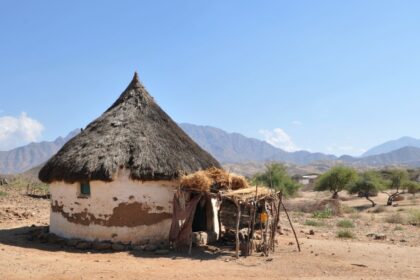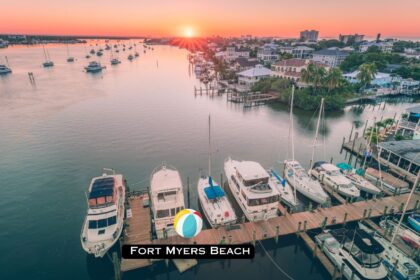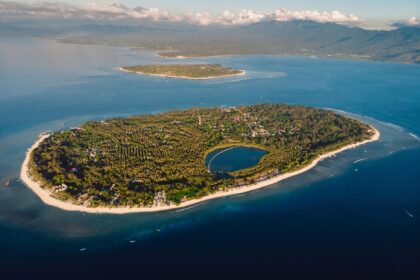I used to be one of those travelers who thought health problems were something that happened to other people – the unprepared tourists who didn’t research their destinations or the unlucky few who just had bad timing. I was young, healthy, and confident that my good genetics and careful planning would protect me from any serious medical issues while traveling.
Then I spent three weeks in a Kathmandu hospital fighting a life-threatening infection that could have been prevented with a $2 vaccination, and my entire perspective on travel health changed forever. What started as a minor oversight in my pre-trip preparation turned into a medical emergency that cost me thousands of dollars, nearly derailed my career, and taught me that when it comes to health while traveling, there’s no such thing as being too cautious.
This isn’t meant to scare anyone away from adventurous travel – some of the most remote and challenging destinations offer the most rewarding experiences. But it is a wake-up call about the health risks that many travelers underestimate and the medical mistakes that can turn a dream trip into a nightmare. Here are the hard-learned lessons from moments when my health assumptions nearly got me into serious trouble.
The Vaccination Gamble: When “Optional” Becomes Life-Threatening
The Overconfidence: Before my trip to Nepal, I diligently researched required vaccinations and got all the mandatory shots. But when it came to “recommended” vaccinations like Japanese Encephalitis, I made a calculated decision to skip them based on cost, inconvenience, and my assessment that the risk was minimal.
The False Economy: The Japanese Encephalitis vaccination series was expensive and required multiple doses over several weeks. I reasoned that since I was only going to be in Nepal for a month and staying in relatively developed areas, the risk didn’t justify the expense and hassle.
The Statistical Trap: I had read that Japanese Encephalitis was rare among travelers, with only a few dozen cases reported annually among the millions of people who visit Southeast Asia. The odds seemed overwhelmingly in my favor, and I convinced myself that I was being smart by avoiding unnecessary medical expenses.
The Reality Check: Three weeks into my trip, I developed severe headaches, high fever, and neurological symptoms that sent me to the emergency room. After days of testing, doctors confirmed that I had contracted Japanese Encephalitis – one of those “rare” cases that I had gambled against.
The Medical Crisis: What followed was the most terrifying three weeks of my life. Japanese Encephalitis can cause brain inflammation, permanent neurological damage, and death. I spent weeks in intensive care, underwent multiple procedures, and faced the real possibility that I might not recover fully or at all.
The Financial Devastation: My medical bills exceeded $25,000, my travel insurance initially refused coverage because they classified Japanese Encephalitis as a “preventable disease,” and I had to pay for emergency medical evacuation insurance that I hadn’t considered necessary.
The Long-Term Impact: Even after recovery, I dealt with lingering neurological effects for months, had to take extended medical leave from work, and required ongoing treatment that continued long after I returned home.
The Lesson: “Optional” and “recommended” vaccinations aren’t suggestions – they’re risk assessments by medical professionals who understand the real dangers better than travel bloggers or budget calculators. The cost of prevention is always less than the cost of treatment.
The Altitude Arrogance: When Mountain Sickness Becomes Mountain Emergency
The Setup: I was planning to trek to Everest Base Camp, and I had done extensive research about the physical demands of high-altitude hiking. I was in excellent shape, had experience with mountain hiking, and felt confident that my fitness level would protect me from serious altitude problems.
The Preparation Shortcut: While I knew about altitude sickness, I convinced myself that gradual acclimatization and physical fitness would be sufficient protection. I skipped the recommended pre-acclimatization medications and dismissed warnings about altitude sickness as something that affected out-of-shape tourists, not serious hikers like myself.
The Symptom Dismissal: When I started experiencing headaches, nausea, and sleep problems at around 12,000 feet, I attributed these symptoms to normal adjustment rather than recognizing them as warning signs of altitude sickness. I pushed forward instead of taking rest days to acclimatize properly.
The Dangerous Progression: Over the next two days, my symptoms worsened dramatically. I developed severe headaches, confusion, difficulty breathing, and coordination problems. What had started as minor discomfort was becoming life-threatening high-altitude cerebral edema.
The Emergency Descent: My trekking guide recognized the severity of my condition and insisted on immediate descent, despite my protests that I could continue. The descent likely saved my life, but it meant the end of my trek and the loss of weeks of preparation and expense.
The Medical Reality: At the clinic in Namche Bazaar, doctors confirmed that I had developed serious altitude sickness that could have been fatal if I had continued ascending. My fitness level had nothing to do with my body’s ability to process oxygen at high altitude.
The Prevention That Works: Altitude sickness affects people regardless of fitness level, age, or previous mountain experience. The only reliable prevention is gradual ascent, proper acclimatization, and sometimes medication. Physical fitness can actually make altitude sickness more dangerous because fit people are more likely to push through warning symptoms.
The Lesson: Respect environmental challenges that affect human physiology. Your fitness level, determination, and previous experience don’t make you immune to altitude sickness, heat stroke, hypothermia, or other environmental health risks.
READ ALSO: When Apps Fail and WiFi Dies: How Digital Dependence Nearly Ruined My Travels
The Food Safety Fallacy: When “Eating Like a Local” Means Eating Like a Patient
The Cultural Immersion Goal: I was determined to experience authentic local cuisine during my travels through India, which meant eating at street stalls, local markets, and family-run restaurants that didn’t cater to tourist tastes or Western food safety standards.
The Immunity Assumption: I had read advice suggesting that travelers should “build up” their immunity to local bacteria by gradually introducing their systems to local food. I thought my previous travel experience had prepared my stomach for anything.
The Reckless Progression: I started eating everything that looked interesting, regardless of food safety considerations. Raw vegetables, tap water, street vendor snacks, dairy products, and meat dishes from vendors with questionable hygiene practices – I tried it all in the name of authentic cultural experience.
The Inevitable Consequence: Within a week, I developed severe food poisoning that went far beyond typical “traveler’s diarrhea.” I was experiencing dangerous dehydration, high fever, and symptoms that suggested a serious bacterial infection rather than simple stomach upset.
The Hospital Reality: What I had dismissed as normal travel stomach problems turned out to be a severe case of bacterial dysentery that required hospitalization, IV rehydration, and strong antibiotics. I spent five days in a Delhi hospital instead of exploring the Golden Triangle.
The Recovery Period: Even after the acute phase passed, my digestive system remained sensitive for months. I had to avoid spicy foods, dairy products, and many of the local dishes I had wanted to try, effectively limiting my cultural food experiences for the rest of the trip.
The Smart Approach: Experiencing local cuisine doesn’t require abandoning food safety. Eating at busy local places with high turnover, choosing cooked foods served hot, and being selective about raw items and water sources allows for authentic experiences without unnecessary health risks.
The Lesson: Your stomach doesn’t develop immunity to dangerous bacteria through exposure – it just gets infected. Food safety precautions aren’t about avoiding local culture; they’re about staying healthy enough to enjoy it.
The Medication Miscalculation: When Prescription Planning Goes Wrong
The Confidence in Preparation: Before a three-month backpacking trip through Southeast Asia, I carefully calculated my medication needs, researched international pharmacy access, and felt confident that I had adequate supplies and backup plans for my prescription medications.
The Quantity Miscalculation: I brought what I calculated was a 90-day supply of my daily medications, plus a small buffer for delays. What I didn’t account for was the possibility of losing medications, having them confiscated, or needing to extend my trip for unexpected reasons.
The Theft Incident: Six weeks into my trip, my bag containing most of my medications was stolen from a hostel in Thailand. Suddenly, I had only a few days’ worth of critical medications and no easy way to replace them in a foreign country.
The Pharmacy Nightmare: Attempting to refill prescriptions in Thailand turned into a bureaucratic maze. My medications weren’t available under the same names, required different prescriptions from local doctors, and some weren’t available at all without importing them through official channels.
The Medical Tourism Trap: I ended up paying premium prices at tourist-oriented medical clinics that specialized in helping foreigners with prescription issues. What would have cost me $50 at home cost over $400 in tourist-friendly Thai clinics.
The Quality Concerns: Some of the replacement medications were generic versions with different formulations that affected me differently than my usual prescriptions. I spent weeks adjusting to new medications while trying to enjoy my travels.
The Prevention Strategy: Bring significantly more medication than you think you’ll need, carry prescriptions in multiple bags, have copies of prescriptions with generic drug names, and research medication availability in your destination countries before departure.
The Lesson: Medical systems vary dramatically between countries, and replacing routine medications abroad can be expensive, time-consuming, and sometimes impossible. Over-preparation for medication needs is always better than under-preparation.
The Insurance Illusion: When Coverage Doesn’t Cover What Matters
The Policy Confidence: I had purchased what I thought was comprehensive travel health insurance that would cover any medical emergencies during my travels. I had read the policy summary and felt confident that I was protected against major medical expenses.
The Fine Print Failure: What I hadn’t carefully read were the exclusions, limitations, and requirements buried in the full policy document. I assumed that “medical coverage” meant coverage for any medical situation that might arise while traveling.
The Adventure Activity Exclusion: When I injured myself during a recreational scuba diving trip in the Philippines, I discovered that my insurance specifically excluded coverage for “adventure activities” including scuba diving, even when done through certified operators with proper safety equipment.
The Pre-Existing Condition Trap: A minor health issue that I had mentioned during the application process was used to deny coverage for a seemingly unrelated medical problem, claiming it was a “pre-existing condition” that wasn’t covered under my policy.
The Geographic Limitation: My policy covered medical expenses in most countries but specifically excluded coverage in several countries I was planning to visit, a detail I had missed when comparing policy options based primarily on price.
The Reimbursement Reality: Even for covered expenses, the reimbursement process required extensive documentation, original receipts, and medical reports that were difficult to obtain while traveling. I had to pay all expenses upfront and wait months for partial reimbursement.
The True Cost: What I thought was $200 in insurance protection ended up costing me over $3,000 in uncovered medical expenses, plus the stress of fighting with insurance companies while trying to recover from injuries in a foreign country.
The Policy Research: Since then, I read full policy documents, not just summaries. I specifically look for exclusions, understand pre-existing condition definitions, verify geographic coverage, and research the claims process before purchasing any travel insurance.
The Lesson: Travel insurance policies are legal contracts with specific terms and limitations. The cheapest policy is rarely the best value when you actually need to use it.
The Climate Casualty: When Weather Becomes a Health Emergency
The Tropical Overconfidence: I was traveling through desert regions of Morocco in summer, confident that my experience with hot weather and my general fitness level would help me handle the extreme temperatures without any special precautions.
The Hydration Miscalculation: I knew the importance of staying hydrated but underestimated how much water I would need in 120°F temperatures. I also didn’t understand the difference between feeling thirsty and being dangerously dehydrated.
The Heat Stroke Progression: During a day of exploring ruins in the desert, I gradually developed symptoms that I initially dismissed as normal responses to heat – fatigue, headache, and mild nausea. I continued my activities instead of recognizing these as warning signs of heat exhaustion.
The Emergency Situation: By afternoon, I was experiencing confusion, rapid heartbeat, and had stopped sweating despite the extreme heat. A local guide recognized the signs of heat stroke and immediately got me to shade and medical attention.
The Close Call: Heat stroke can be fatal within hours if not treated properly. I required emergency cooling procedures, IV rehydration, and medical monitoring to prevent organ damage. What I had dismissed as being “a little overheated” was actually a life-threatening medical emergency.
The Recovery Impact: The heat stroke affected my trip for weeks afterward. I became much more sensitive to heat, had to avoid outdoor activities during peak temperature hours, and required constant attention to hydration and temperature regulation.
The Prevention Knowledge: Heat-related illness prevention requires understanding early warning signs, maintaining electrolyte balance (not just water consumption), avoiding alcohol and caffeine in extreme heat, and respecting temperature limits regardless of fitness level.
The Lesson: Environmental health risks are serious medical threats that affect everyone regardless of experience or fitness. Climate-related health emergencies can develop quickly and become life-threatening before you realize how serious the situation has become.
READ ALSO: Tourist Trap Survival Guide: How I Learned to Spot Travel Scams Before They Spot Me
The Mental Health Oversight: When Travel Stress Becomes Travel Crisis
The Psychological Preparation Gap: While I had thoroughly prepared for physical health challenges, I had given almost no thought to the mental health impacts of extended solo travel, cultural isolation, and the constant stress of navigating unfamiliar environments.
The Cumulative Stress Effect: After months of travel, the daily challenges that had initially felt exciting and adventurous began feeling overwhelming. Language barriers, cultural differences, navigation stress, and social isolation started taking a serious toll on my mental wellbeing.
The Anxiety Escalation: What started as normal travel stress evolved into persistent anxiety that began affecting my sleep, appetite, and decision-making abilities. I found myself unable to enjoy experiences that should have been highlights of my trip.
The Isolation Amplification: Being far from familiar support systems, unable to communicate effectively with locals, and dealing with constant uncertainty created a sense of isolation that became genuinely distressing.
The Shame Spiral: I felt embarrassed about struggling with mental health issues while living what appeared to be an exciting adventure. I avoided seeking help because I thought I should be grateful for the opportunity to travel rather than struggling with anxiety and depression.
The Professional Intervention: When I finally reached out to a mental health professional through telemedicine, I learned that travel-related mental health challenges are common and treatable, but they require the same attention and care as physical health issues.
The Support System Importance: Having regular contact with mental health support, maintaining connections with friends and family back home, and recognizing early warning signs of travel-related mental health issues became essential parts of my travel planning.
The Lesson: Mental health is just as important as physical health when traveling. The stress of constant adaptation, cultural navigation, and social isolation can create genuine mental health challenges that require attention and care.
Building a Comprehensive Travel Health Strategy
After learning these lessons through various medical crises, I’ve developed a more thorough approach to travel health:
The Prevention Investment: Spend money upfront on proper vaccinations, quality travel insurance, and medical consultations rather than gambling with your health to save money on prevention.
The Documentation System: Maintain detailed records of vaccinations, prescriptions, medical conditions, and emergency contacts in multiple formats and locations.
The Research Requirement: Understand the specific health risks of your destinations, including environmental hazards, disease risks, food safety considerations, and available medical care quality.
The Medication Management: Bring more medications than you think you’ll need, understand generic names and availability, and have prescriptions translated into local languages.
The Insurance Investigation: Read full policy documents, understand exclusions and limitations, and verify that your coverage matches your planned activities and destinations.
The Support Network: Maintain connections with healthcare providers back home, establish communication systems for medical emergencies, and don’t hesitate to seek professional help when needed.
The Health-First Travel Philosophy
The most important lesson from all my medical mistakes is that health should be the foundation of travel planning, not an afterthought. The best travel experiences happen when you’re healthy enough to fully participate in and enjoy your adventures.
Every destination offers amazing experiences, but none of them are worth risking your long-term health or your life. The most adventurous travelers I know are also the most careful about health preparation because they understand that taking care of yourself allows for more adventures, not fewer.
Health emergencies while traveling are expensive, stressful, and can have long-lasting consequences that extend far beyond your trip. But most travel health problems are preventable with proper preparation, reasonable precautions, and respect for the health risks that come with exploring unfamiliar environments.
The goal isn’t to eliminate all health risks from travel – that would eliminate most of what makes travel rewarding. The goal is to take calculated risks based on good preparation and professional medical advice rather than unnecessary risks based on overconfidence or false economy.
Your health is your most valuable travel asset. Protect it with the same care and attention you give to your passport, your money, and your travel plans. Everything else about your trip depends on your ability to stay healthy enough to enjoy it.
In another related article, Ultimate Guide to Miami Airport: Navigate MIA Like a Pro







